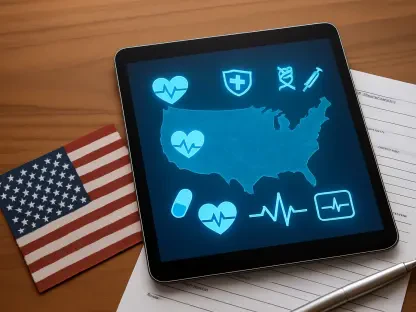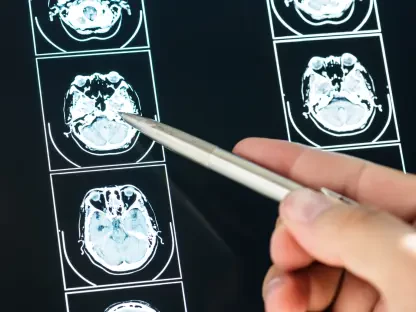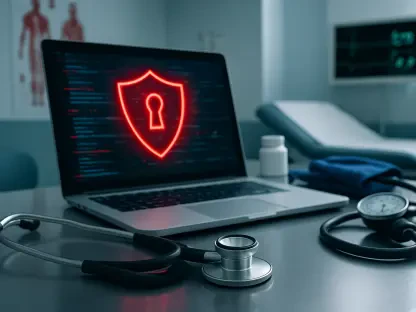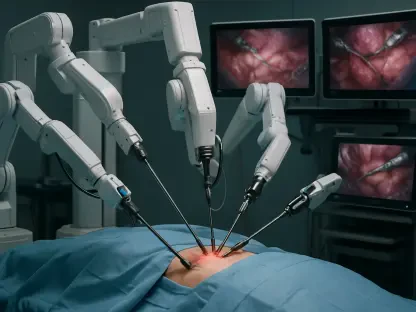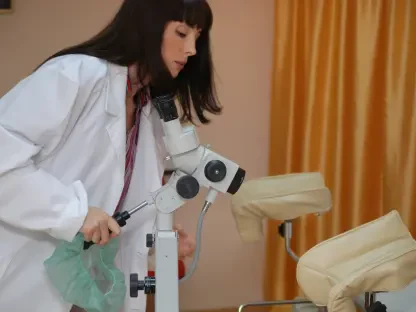In the evolving landscape of healthcare, a remarkable advancement is reshaping the way patients recover from major cancer surgeries, particularly those involving abdominal or pelvic procedures for gastrointestinal, genitourinary, or gynecologic cancers. Imagine a patient returning home after a grueling operation, vulnerable and uncertain, yet equipped with cutting-edge technology that keeps their medical team just a digital heartbeat away. Remote monitoring, through wearable devices and smartphone apps, is emerging as a lifeline during the fragile post-operative period. This innovative approach not only tracks vital recovery metrics like daily step counts but also enables timely interventions when symptoms escalate. By bridging the gap between hospital discharge and home recovery, such technology promises to transform patient outcomes, offering a glimpse into a future where healthcare is more connected and responsive than ever before.
Transforming Post-Surgical Care with Technology
Enhancing Recovery Through Digital Oversight
Remote monitoring represents a significant leap forward in managing the recovery of cancer surgery patients, especially in the critical first two weeks after discharge. A comprehensive study involving nearly 300 participants demonstrated the power of this technology by equipping them with wristbands to monitor activity levels and apps to report symptoms. Half of these patients benefited from active oversight, where triage nurses reviewed incoming data and stepped in when issues were detected. This proactive approach resulted in a notable 6% improvement in functional recovery compared to a control group that received only automated alerts. The ability to catch potential complications early through continuous data streaming underscores how digital tools can provide a safety net, ensuring patients regain strength and mobility with fewer setbacks during those pivotal early days of healing at home.
Reducing Complications with Timely Interventions
Beyond improving functional recovery, active remote monitoring has shown a profound impact on minimizing major complications for cancer surgery patients. The same study revealed that those under constant digital surveillance experienced better symptom management, which directly translated to less interference with their daily routines. When nurses could access real-time updates on a patient’s condition, they were able to address concerns before they escalated into serious health issues. This seamless connection between patients and healthcare providers highlights a shift toward a more preventive model of care, where technology acts as an early warning system. As a result, patients not only felt more supported but also faced fewer hospital readmissions, demonstrating that remote monitoring can be a game-changer in maintaining stability during the fragile post-operative phase and enhancing overall quality of life.
Future Directions for Digital Health in Oncology
Personalizing Monitoring for Diverse Needs
As promising as remote monitoring has proven to be, there remains a pressing need to tailor these interventions to the specific demands of different cancer surgeries and patient profiles. The diversity in treatment contexts—ranging from the type of cancer to the nature of the surgical procedure—means that a one-size-fits-all approach may not always yield optimal results. Researchers are now focusing on refining these digital tools to account for individual variations, ensuring that monitoring protocols align with unique recovery trajectories. For instance, patients undergoing pelvic surgeries might require different activity benchmarks compared to those recovering from abdominal procedures. By customizing data thresholds and intervention triggers, healthcare providers can maximize the effectiveness of remote monitoring, paving the way for a more nuanced and patient-centered approach to post-surgical care that addresses specific challenges and enhances recovery outcomes.
Embracing Innovation in Healthcare Delivery
Looking ahead, the integration of connected devices into routine cancer care signals a broader transformation in healthcare delivery, as emphasized by experts advocating for interdisciplinary collaboration. Thought leaders in the field argue that the future lies in leveraging technology to keep patients at the core of medical decisions, using real-time data to inform personalized support plans. This vision involves not just wearable trackers but also advanced analytics to predict recovery patterns and potential risks. The push for innovation encourages providers to adopt digital health solutions as standard practice, ensuring that patients benefit from continuous care even outside hospital walls. Reflecting on the strides made, it’s evident that past efforts in remote monitoring have laid a foundation for a more responsive system, one that empowers both patients and medical teams to achieve better health outcomes through technology-driven insights during recovery from cancer surgeries.



